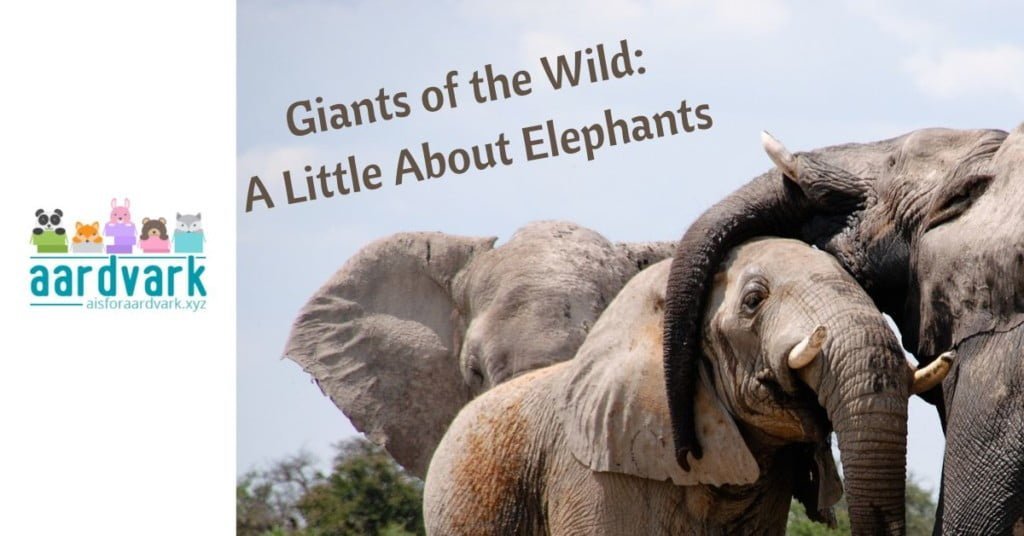Elephants, Earth’s largest land mammals, are captivating creatures that have roamed our planet for millions of years. With their impressive size, distinct appearance, and complex social structures, elephants hold a special place in both the natural world and human culture. But how much do you know about them?
In this article, we’ll embark on a journey to explore the world of elephants. We’ll touch on their appearance, size, and color. We’ll look at what they eat, their mating rituals, and communal behavior. We’ll even toss in some awesome and unexpected fascinating facts, elephants’ cultural significance in a few contexts, and even their appearances in pop culture.
Appearance and Size
Elephants are instantly recognizable thanks to their unique physical features:
Size
These majestic creatures are the largest land animals on Earth. African elephants are typically larger, with males weighing between 10,000 to 13,000 pounds and standing around 10 to 13 feet tall at the shoulder.
Asian elephants are slightly smaller, with males weighing between 8,000 to 10,000 pounds and measuring about 9 to 10 feet in height.
Ears
Elephants have large, fan-shaped ears that help regulate their body temperature. The unique shape of their ears is also specific to their species: African elephant ears are larger and resemble the continent of Africa, while Asian elephant ears are smaller and more rounded.
Trunk
Perhaps the most iconic feature of an elephant is its long, muscular trunk. This versatile appendage is a multi-purpose tool for feeding, drinking, communicating, and even expressing emotions.
Tusks
Some, but not all, elephants have long, curved tusks. Both African and Asian elephants can have tusks, which are elongated incisor teeth. These tusks are used for various purposes, including digging, lifting, and defense.
Color
Elephants have thick, wrinkled skin that can appear gray or brown. However, their color can change depending on their environment, as they often dust themselves with soil and mud, which can give their skin a reddish or brownish hue.
Food
Elephants are herbivores and need to eat a lot. Their diet primarily consists of:
- Grasses: In the wild, grasses make up a significant portion of their diet.
- Leaves: Elephants are browsers and feed on a variety of leaves, twigs, and branches from trees and shrubs.
- Fruits and Vegetables: They also enjoy consuming a wide range of fruits, vegetables, and other plant material.
- Water: Elephants require large quantities of water to stay hydrated, and they often travel long distances to find water sources.
Mating Habits
Elephants have complex mating rituals and behaviors:
Estrous Cycle
Female elephants, called cows, go through a regular estrous cycle, which lasts approximately 18-22 weeks. During this time, they’re open to mating.
Mating Competition
Male elephants, known as bulls, engage in intense competition for the attention of females. Bulls often engage in physical battles, using their tusks to establish dominance.
Calves
After a gestation period of about 22 months (the longest of any land mammal), a female elephant gives birth to a single calf. Calves are cared for by their mothers and other female relatives within the herd.
Communal Habits
Elephants are highly social animals known for their complex communal behavior.
Family Units
They live in tight-knit family units, led by the oldest and most experienced female, known as the matriarch. These family groups often include several generations of related elephants.
Communication
Elephants communicate through a variety of vocalizations, including trumpets, rumbles, and roars. They also use non-verbal cues such as body language and physical contact.
Emotional Bonds
Elephants are known for their deep emotional bonds within their family groups. They mourn their dead, celebrate births, and comfort one another in times of distress.
Interesting Facts
Memory
Elephants have remarkable long-term memory and are known to recognize and remember individual humans and other animals for years.
Intelligence
They are among the most intelligent animals on Earth, with problem-solving abilities and self-awareness.
Complex Society
Elephant societies exhibit behaviors that suggest a level of cultural and social complexity, including tool use and cooperation in various activities.
Migration
Some elephant populations engage in long-distance migrations in search of water and food, traveling hundreds of miles.
Cultural Significance
Elephants hold profound cultural significance in many societies. This is most obvious in the regions they live in but has also spread around the world.
Religious Symbolism
In some cultures, elephants are revered as symbols of wisdom, strength, and good luck. They feature prominently in religious ceremonies and folklore.
Art and Iconography
Elephants have been depicted in art, literature, and iconography for centuries. They have served as symbols of power and majesty in various civilizations.
Appearances in Pop Culture
Elephants have made their presence felt in various forms of popular culture:
- Dumbo: The Disney movie “Dumbo” tells the heartwarming tale of a young elephant with oversized ears who learns to embrace his uniqueness.
- Babar: The beloved children’s book series and animated TV show “Babar the Elephant” follows the adventures of a wise elephant king and his family.
- The Jungle Book: Disney’s “The Jungle Book,” based on Rudyard Kipling’s story, features the lovable character Hathi, a wise and elderly elephant who serves as a leader of the jungle animals.
- Tarzan: In Edgar Rice Burroughs’ “Tarzan” books, the character Tantor is a loyal elephant friend to the jungle’s human protagonist.
Elephants, with their awe-inspiring size, unique physical features, and intricate social structures, are among the most remarkable creatures on our planet. Their physical and social aspects have captivated human imaginations for centuries.
Whether seen in the wild or pop culture, elephants continue to remind us of the wonders of the natural world and the enduring bond between humans and these magnificent giants of the animal kingdom.







